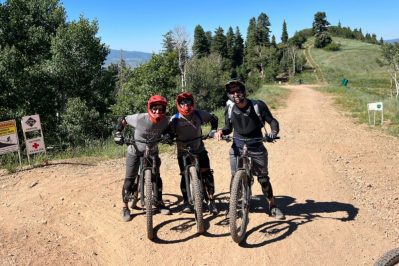This weekend, I was returning from a short spring break trip with my sons and decided to reschedule our flight home due to some potential inclement weather.
As I made my booking in the American Airlines app, I saw a label indicating that our flight would be on a 737-MAX plane. The 737-MAX is the newest version of the single-aisle workhorse of the Boeing fleet and the most popular plane model in the world. This new version was also grounded for 18 months after two fatal crashes shortly after launch, which stemmed from a tragic failure in values leadership, as I wrote about in a previous Friday Forward.
Even though the 737-MAX has been back in operation without incident for a year, seeing it in our itinerary caused a moment of hesitation. Clearly, American Airlines anticipated this unease—they intentionally label the 737-MAX so that people can opt out of flights on that plane, due to its history.
Admittedly, I had second thoughts, but decided not to opt out. Instead, recalling a recent Friday Forward about the distinction between discomfort and danger, I decided this could be a teachable moment. Rather than hiding the nature of the 737-MAX from my boys, I actually told them we were going to fly on this new plane that previously had two fatal crashes and had been essentially recalled.
Naturally, my sons responded with a bunch of questions, all of which I, fortunately, could answer. They wondered about the cause of the crashes, if anyone survived and what was different now.
Having followed this issue closely, I shared what went wrong with the plane previously and how the issue was addressed. I also shared that, as part of the plane grounding, Boeing changed hardware and software for the new automated MCAS system that was the cause of the crashes, and thoroughly trained pilots to use it—something that wasn’t done before the crashes.
I also shared the probability of dying in a commercial plane crash as compared to risk while driving a car and even the probability of being hit by lighting. After a few minutes of questions, my sons were on board, and we never discussed it again.
This was an interesting case study in risk assessment. Frankly, many of us are pretty lousy at evaluating risk; we often let our emotions, or our need for control, override the data in a given situation.
For example, I know parents who always take separate flights when traveling as a couple, but drive together daily. There are also plenty of people who fear or avoid flying but engage in risky behaviors such as texting and driving, or make lifestyle choices that put them in a higher risk group for life-threatening heath issues. The COVID-19 pandemic was a case study in many people making emotion-based decisions rather than fact and probability-based ones.
If you are wondering where you might be misunderstanding risk in your own life, consider the following stats:
- The risk of dying on a commercial flight is roughly one-in-11 million.
- Your chance of being struck by lightning in a given year is one-in-500,000.
- Your chances of dying in a car crash are a roughly one-in-107. And 52 percent of car crashes happen within five miles of the driver’s home.
- Your chance of dying from a heart attack is about one-in-eight.
A good formula for thinking about risk is: Risk = Probability x Consequences.
Said more simply, the magnitude of risk is the likelihood of something happening multiplied by the severity of the outcome. In some cases, the outcome might be very severe (like a plane crash) but the probability is so low that it renders the risk very low on an absolute basis. In other cases, there might be a very high likelihood of a negative, but not fatal, outcome. In these instances, the overall level of risk is actually higher, even if it feels less dire.
We all need to take informed risks in life, and I hope this experience will help my kids look at risk through an empirical lens, not an emotional one. I know it helped me to step back and think of it this way.
Quote of The Week
“If you keep taking calculated risks, you will keep getting considerable rewards.”
–Amit Kalantri









